In Kansas, it is possible to spot 7 different species of woodpecker. These are:
- Northern Flicker
- Red-bellied Woodpecker
- Downy Woodpecker
- Hairy Woodpecker
- Ladder-backed Woodpecker
- Lewis’s Woodpecker
- Red-headed Woodpecker
Want to learn more? Take a look at the North American Guide to Woodpeckers
The state of Kansas sits in the heart of America’s ‘breadbasket’ with a varied climate that contributes to ideal habitats in some places and adaptably dry habitats in others.
Woodpeckers aren’t averse to seasonal cold or humidity, but like most songbird-sized flyers, they will reside wherever the trees grow.
Below, we list the woodpeckers who call the Sunflower State home.
Take a look at our article on How to Attract Woodpeckers?
What Woodpeckers can be seen in Kansas?
1. Red-bellied Woodpecker
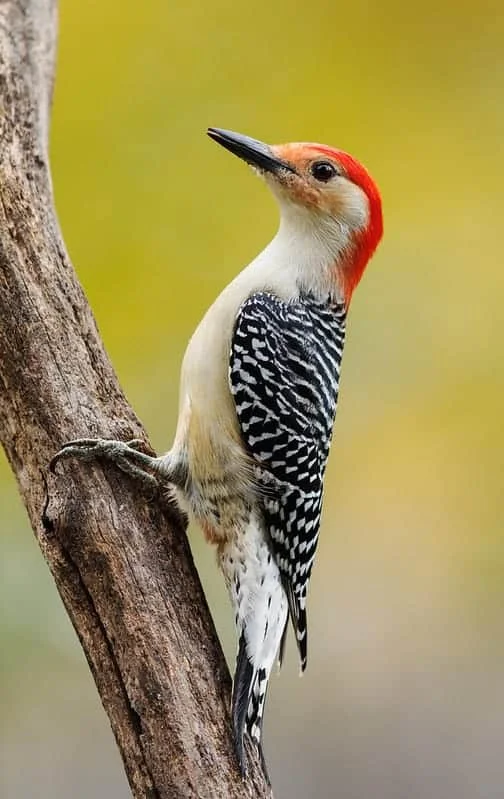
This mid-sized woodpecker is among the most visible of its kind in Kansas, spotted year-round throughout the state.
The red-bellied woodpecker has a mostly white belly save for its white specks, but its name is to differentiate the bird from its similar-looking kin.
They are red about the crown and neck, and both male and female have distinct black-and-white stripes on their wings.
They hunt and rest on the eastern side of Kansas where the food is more plentiful, but they have been recorded breeding and hunting in most areas of the state.
Oak trees are of particular interest, so the red-bellied woodpecker also frequents backyard and parks where acorns are found, as well as backyard feeders.
2. Downy Woodpecker
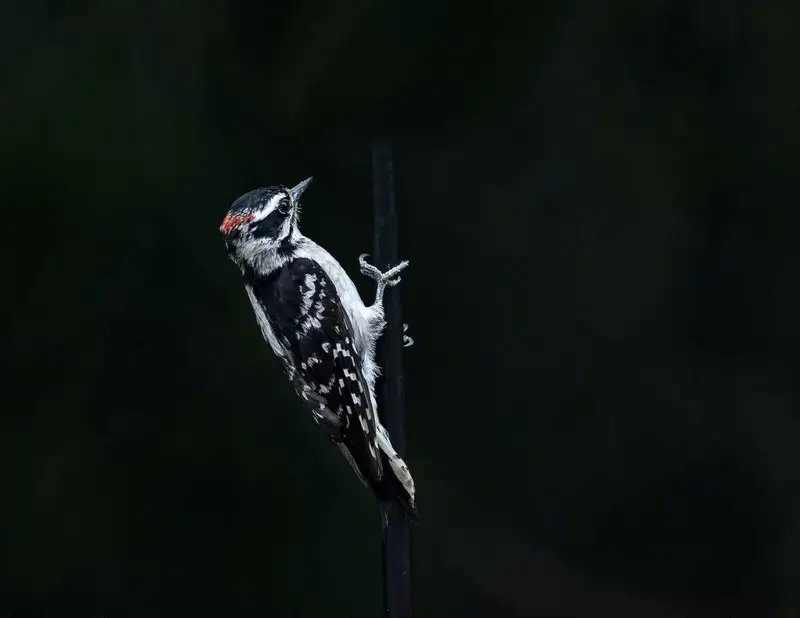
This is another common visitor to backyard feeders year-round in Kansas.
It has the common black and white striped pattern across the wings and back found on many woodpeckers, which turns more speckled at the wing tips.
Its distinct feature is the red crown, slightly different from others in that it only covers the very top of an otherwise black and white head.
Though recognizable, the downy woodpecker is also among the smallest, so spotting it is a matter of finding it rather than identification.
Fortunately, these woodpeckers are comfortable in civilizations, frequenting tree lots, neighborhood parks, and bird feedsers.
They are often seen standing on tree limbs overlooking backyards, or skipping along the ground foraging for acorns and seeds.
3. Hairy Woodpecker
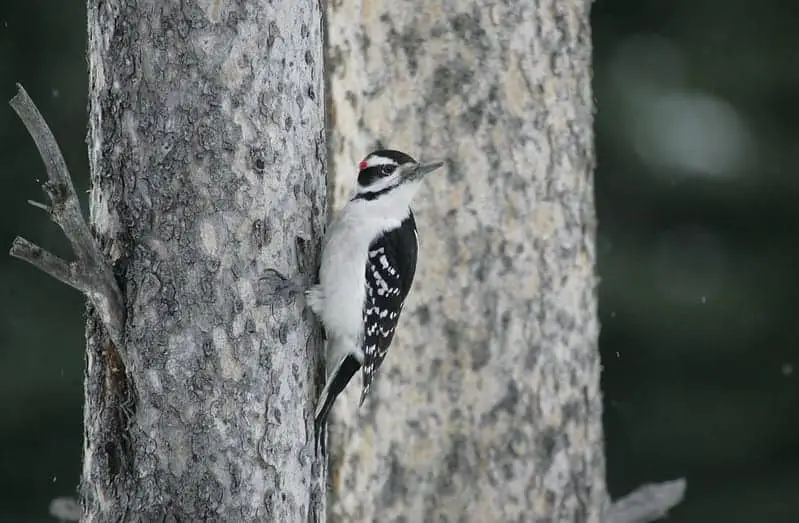
While hairy woodpeckers do seem like larger downies, there are some differences.
The former has sharper contrast between the balack and white of its feathers–that is, less blending and more solid lines–as well as a smaller patch of red feathers at the very top of its crown.
Hairy woodpeckers are a year-round resident through most of the U.S. rarely going below Kansas in their southwestern migrations, but breeding through all parts of the state when it’s warm.
Like most woodpeckers, they can be attracted to backyard feeders with sunflower seeds and suet, and they can be spotted wherever there are deciduous trees to drill.
In fact, they specifically gather where trees have already been destroyed, either by wood-boring insects, water, or humans.
4. Northern Flicker
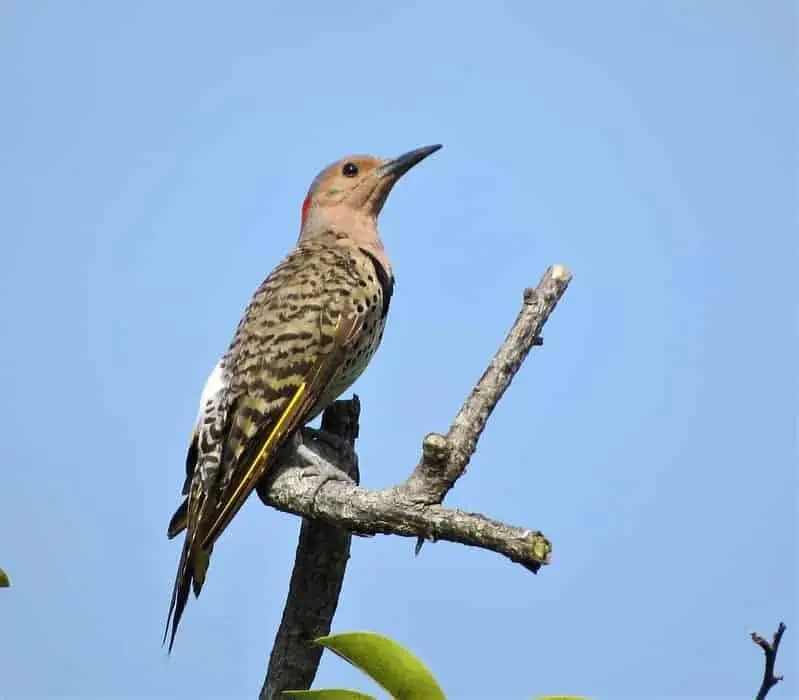
Many people call this bird simply “flicker” since the northern part of its name is a bit misleading. Like many migratory birds, flickers breed in the far north past the Canadian border.
Like most of the U.S., they are a year-round staple in Kansas, visiting bird feeders and backyards, lots, local parks, and even lone trees if they have acorns and seeds around.
You can also find them on the ground, digging for insects more often than its tree-borne kin.
Flickers boast an eccentric blend of colors: an orange body spotted in black like a cheetah; a black ‘bib’ about the neck with a similar patch near its beak; a white face, brown mask, and silver crown with spots of brigh red in random places; and a dark grey and black set of feathers on its diminutive wings.
5. Lewis’s Woodpecker
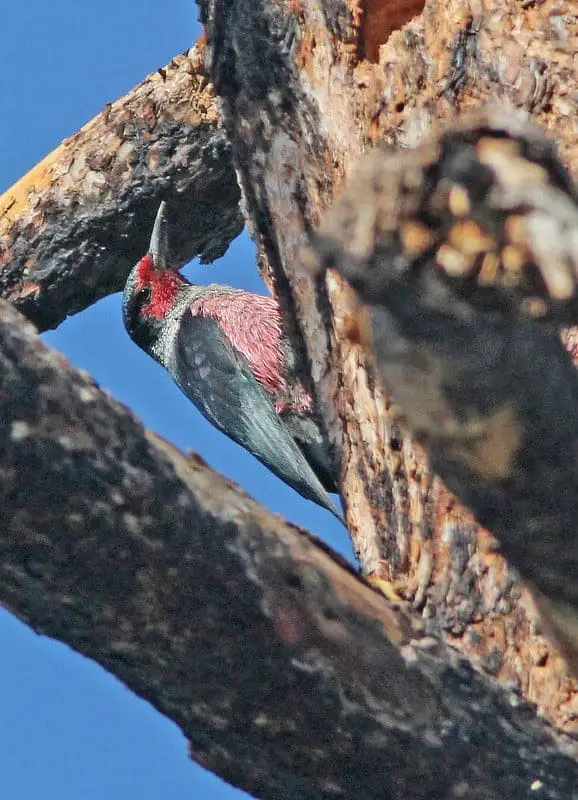
Named for early American explorer Meriweather Lewis, this woodpecker can be seen a bit of an anomaly among its kin.
Lewis’s woodpeckers are more like birds of prey than the typical foraging nature of their kind, often snatching insects from midair for their meals.
They are the more ‘natural’ of the species in Kansas, preferring the mountainous regions with tall pines that are off the beaten path, though they can be lured to backyards in search of acorns and feeders.
Their illustrious plumage is hard to miss, consisting of a whitish-pink stomach that blends into grey on the neck and turns to dark red or purple on the face.
Its crown is often dark gray, and its wings are a shiny, dark green that makes it stand out from other Melanerpes.
Lewis’s are year-round residents who fly to the southern reaches when it’s coldest but congregate in the northwest to breed and nest.
6. Red-headed Woodpecker
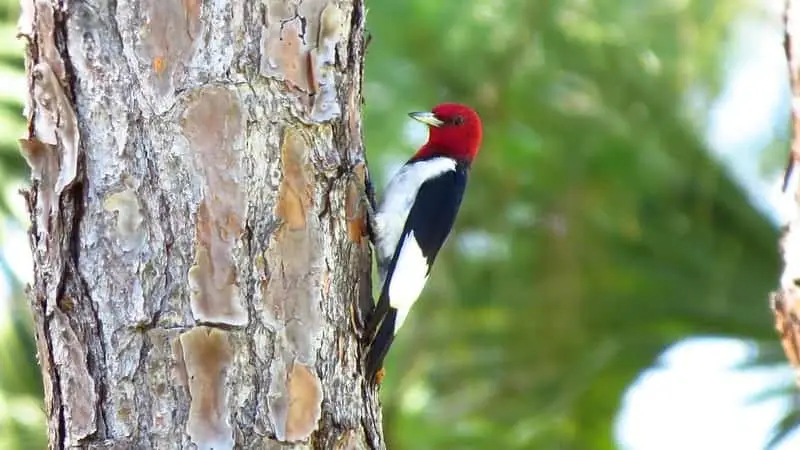
The most common North American woodpecker makes its home in Kansas all year, in the dense deciduous forests of its uncharted woods, its national parks, and backyard trees and feeders.
Like the red-bellied woodpecker, they gather in the eastern side of the state, but breed in the west. This bird’s trademark red head is in stark contrast to its white belly and black wings and back, making for easy identification.
The wings usually have a white stripe across the center as well.
The red-headed woodpecker is perhaps the most acclimated to human contact, frequently visiting backyard feeders and taking residence in tree plots and local parks.
It is possible to set up a feeder near an oak tree and lure a flock of these birds.
7. Ladder-backed Woodpeckers
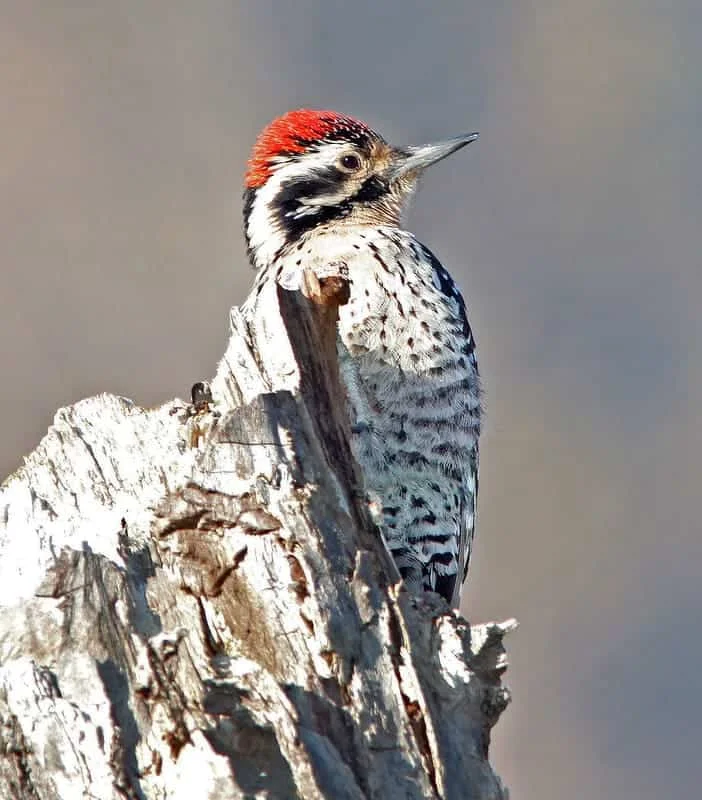
This smallish woodpecker is more suited for dry living of the western deserts of the U.S., though it has been seen in the southern tip of Kansas over the years.
The ladder-backed woodpecker prefers the brush, and the types of seeds that grow in deserts. It is not Its descriptive name comes from the pattern of brown and light brown stripes across its back, which resemble a ‘ladder’ from tail to crown.
Though not necessarily antisocial, these are the least likely of their kind to be encountered in backyards. Residents of towns in arid locations near gatherings of deciduous trees could find them rummaging for seeds any given occasion, however.

About Us
We are avid bird-watchers who recently retired, allowing us more time to travel the world. Fortunately, we have managed to visit numerous countries around Europe, Asia, and America. Watching and photographing birds has been a passion for many years and we are making the most of the extra time on our hands!
